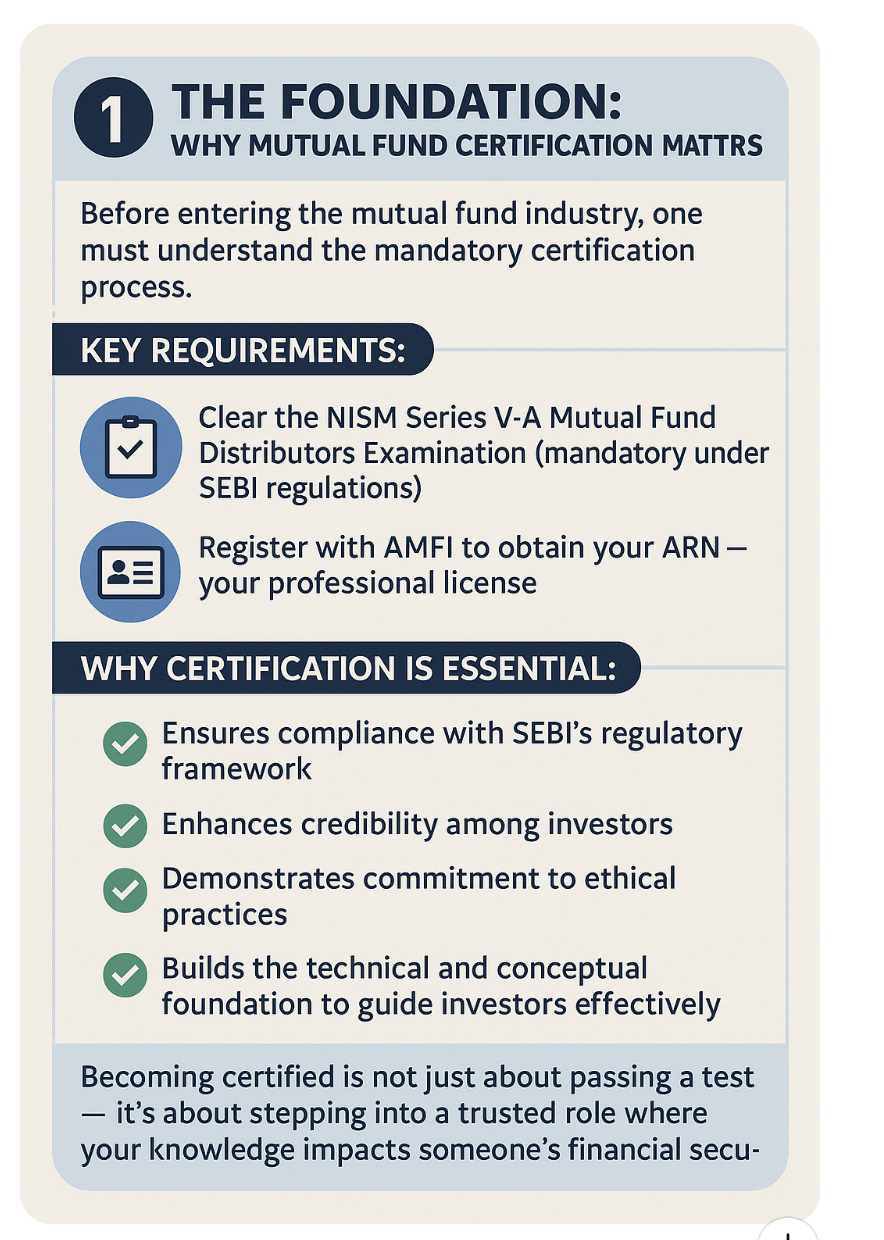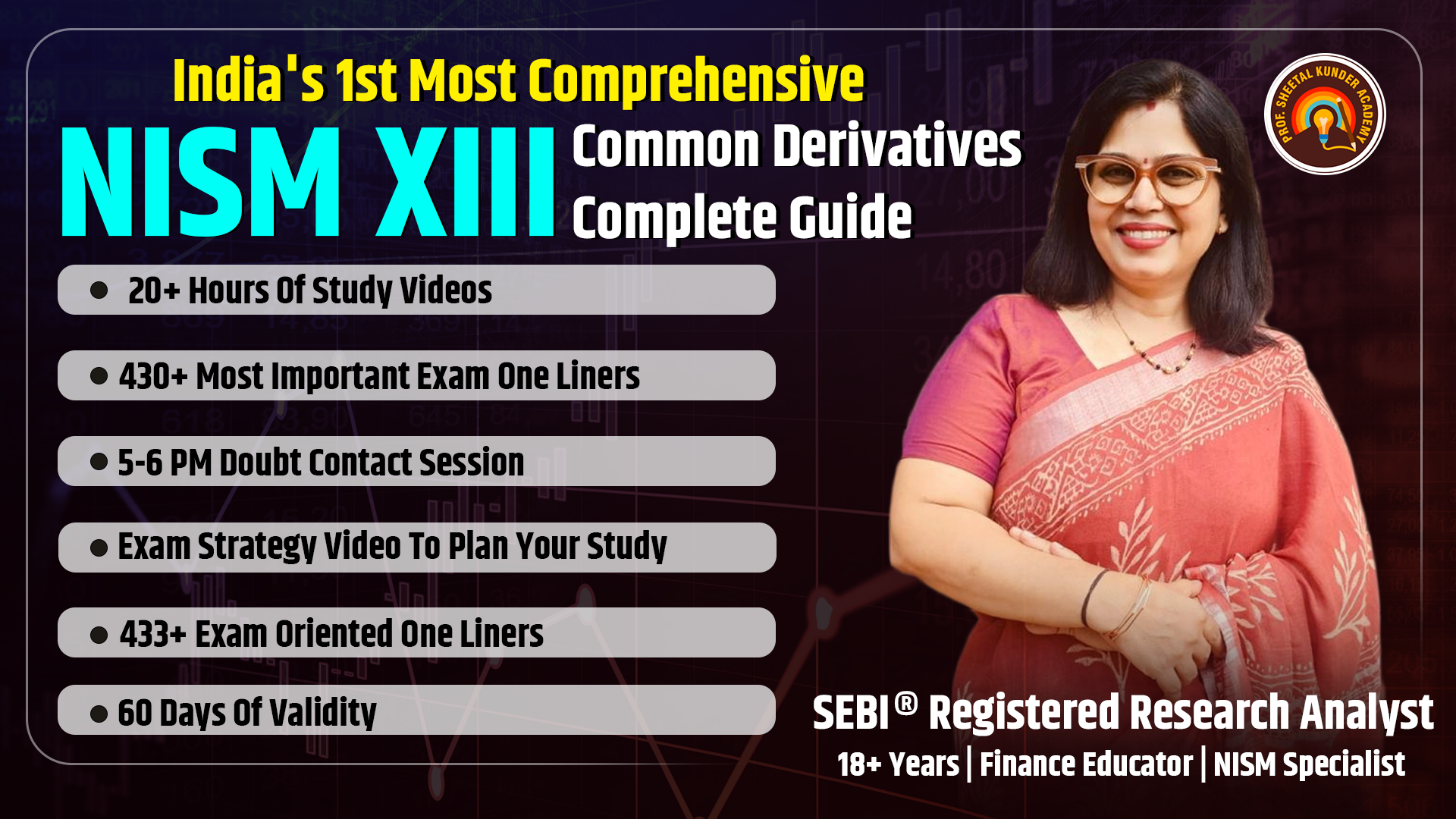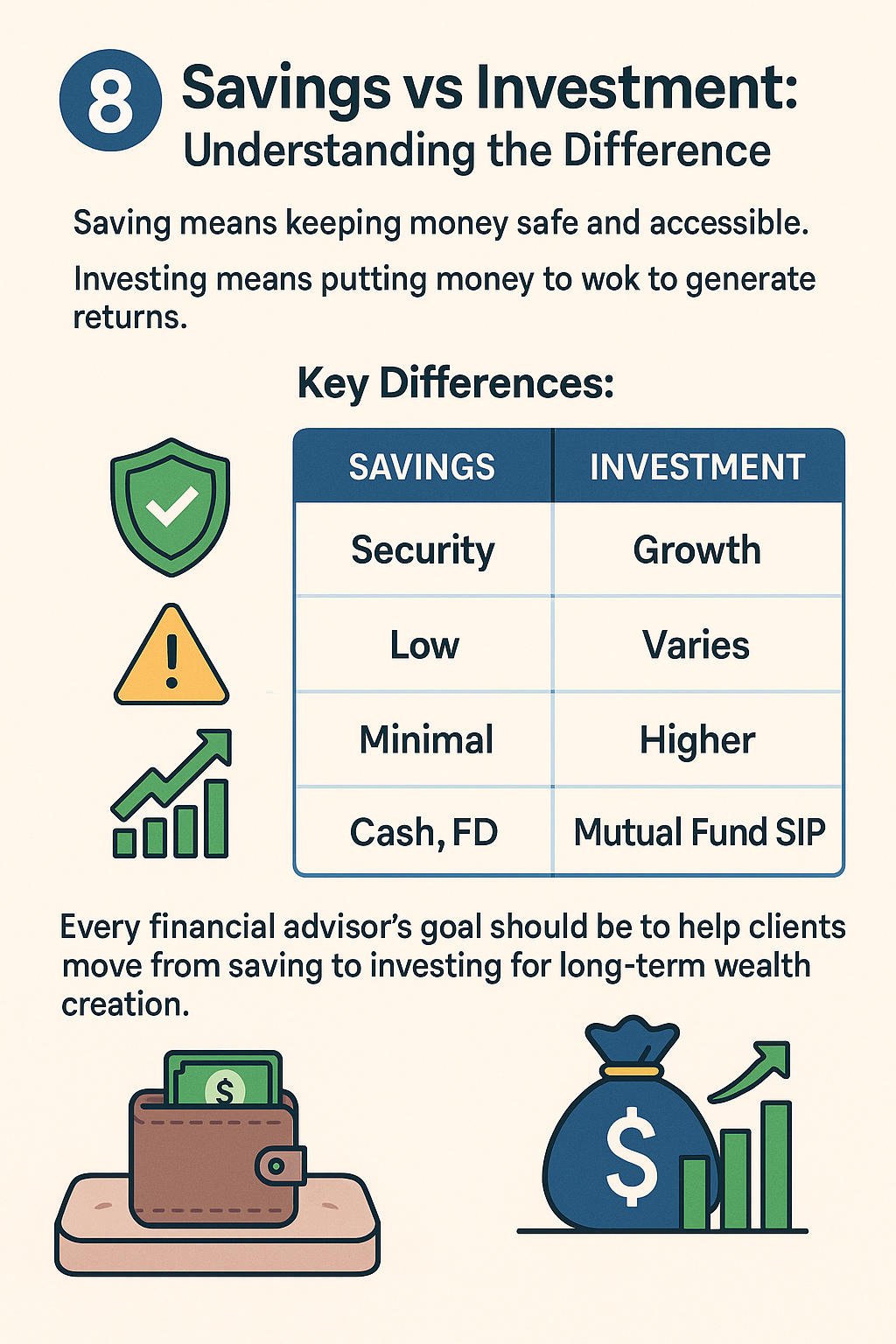There are no items in your cart
Add More
Add More
| Item Details | Price | ||
|---|---|---|---|
Sun Oct 12, 2025
In the fast-growing financial landscape of India, the mutual fund industry has emerged as one of the most powerful tools for wealth creation.
Behind every successful investor, there’s often a knowledgeable guide — a Mutual Fund Distributor (MFD) — who understands the market, educates clients, and helps them achieve their financial goals.
Becoming an MFD is not just a career move; it’s a journey of learning, growth, and responsibility. The first step is earning the NISM Mutual Fund Distributor Certification, gaining conceptual clarity, and developing the mindset of a true financial professional.
This blog — inspired by an insightful video lecture — walks you through everything: exam preparation, investment principles, client advisory ethics, and the mindset needed to succeed.

Before entering the mutual fund industry, one must understand the mandatory certification process.
The NISM exam is conceptually easy but requires clarity and precision.
By following this strategy, students can prepare confidently without feeling overwhelmed.
Instead of dense books, use structured learning tools — summarized notes, concept-based video lectures, and chapter-wise test series.
The goal is to make preparation interactive and enjoyable, turning it into a journey of self-improvement rather than a mechanical task.

Before studying, adopt the mindset of a financial professional — one who views learning from a client-centered perspective.
Success in this field is not about passing exams, but about becoming a responsible and insightful advisor.
“If your money is not working for you, you will have to work for money all your life.”
This powerful idea captures the true essence of investing.
As a mutual fund distributor, your role is to help clients make their money grow and generate income, achieving financial independence through well-balanced portfolios.
Dreams remain abstract until they are converted into measurable financial goals.
This structured approach gives clients a clear financial roadmap for their investments.
Inflation silently reduces money’s purchasing power over time.
Teaching clients about inflation helps them see why investing — not just saving — is vital.

Saving means keeping money safe and accessible.
Investing means putting money to work to generate returns.
| Aspect | Savings | Investment |
|---|---|---|
| Purpose | Security | Growth |
| Risk | Low | Varies |
| Return | Minimal | Higher |
| Example | Cash, FD | Mutual Fund SIP |
Every financial advisor’s goal should be to help clients move from saving to investing for long-term wealth creation.
Every investment involves a trade-off between risk and return.
Mutual funds make this balance achievable through diversification.
“Rule No. 1: Never lose your money.
Rule No. 2: Never forget Rule No. 1.” – Warren Buffett
A good investment prioritizes safety first, then liquidity, and finally returns.

| Investment Type | Features |
|---|---|
| Gold | Highly liquid, stable, good for diversification |
| Real Estate | Long-term growth, less liquid |
| Mutual Funds | Diversified, flexible, professionally managed |
| Equities | High risk, high return for long-term goals |
A balanced portfolio blends these based on the investor’s goals and risk profile.
A certified distributor is not just a salesperson — but a financial educator and relationship manager.
The best distributors don’t sell — they guide and empower.
Financial planning is about earning freedom, not just money.
That’s the ultimate goal of smart investing and distribution.
Becoming a mutual fund distributor marks the start of lifelong learning.
Knowledge, ethics, and empathy are the three cornerstones of a successful financial career.
Clearing the exam is only the beginning.
True success lies in guiding others with honesty, confidence, and care.
“Your financial growth depends on how well you help others grow financially.”
So start your journey today — prepare diligently, learn consistently, and become a trusted mutual fund distributor who transforms lives through financial wisdom.

Prof. Sheetal Kunder
SEBI® Research Analyst. Registration No. INH000013800 M.Com, M.Phil, B.Ed, PGDFM, Teaching Diploma (in Accounting & Finance) from Cambridge International Examination, UK. Various NISM Certification Holders. Ex-BSE Institute Faculty. 18 years of extensive experience in Accounting & Finance. Faculty Development Programs and Management Development Programs at the PAN India level to create awareness about the emerging trends in the Indian Capital Market and counsel hundreds of students in career choices in the finance area